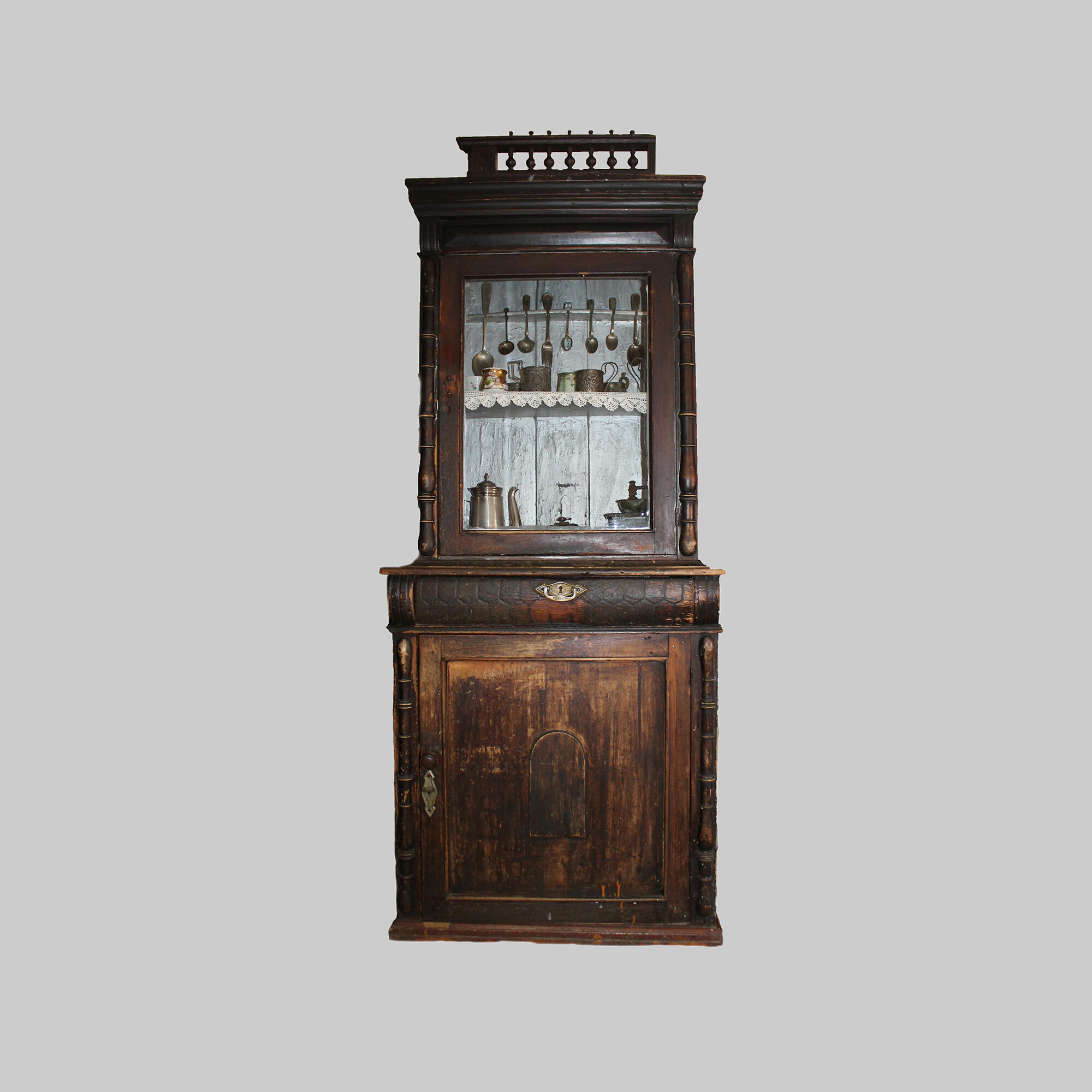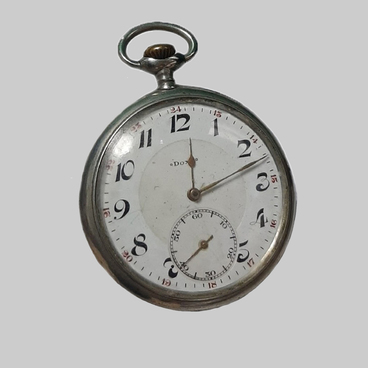This small cabinet designed for storing kitchen utensils attracts with its decorativeness. Its facades are decorated with overhead pilasters in the form of a bamboo print. The drawer handle, keyhole covers, and a hexagonal pattern add a special elegance to the cabinet.
The first display cabinets appeared in France in the royal palaces and homes of the highest aristocrats before the Renaissance. The cabinets were called display cabinets, because things in them are not just kept, but put on display for demonstration. Later, in the 16th century, a small cabinet with shelves for dishes appeared in France. It was the common ‘ancestor’ of the china cupboard and sideboard. At that time, the number of shelves in the cabinet spoke of the owner’s position in society. Thus, in the king’s apartment, there was an unusual cabinet with twelve shelves. The duke could have a cabinet with four shelves, and the count was limited to three. Commoners had no right to keep such a piece of furniture in their house at all. Despite the fact that dish cabinets appeared a long time ago, they found their usual shape only in the second half of the 17th century in Sweden.
Initially, the sideboard cabinet served as a purely kitchen furniture, was a wide cabinet with doors, and was as high as an ordinary table. Table linen was stored below, and silverware was stored in small drawers under the table top. A little later, the sideboard got a second ‘floor’ in the form of a small closed mezzanine for plates. At first, it looked like a smaller copy of the bottom. They just attached another small cabinet with blind doors to the top. Later, the doors were made of glass. This allowed the sideboard to become more than just a kitchen cabinet, and it quietly moved to the halls.
Such a cabinet was needed in order to put beautiful dishes behind glass doors and hide everyday dishes in a closed cabinet. But it was not just the kitchen utensils that were stored in the sideboard. Collections of figurines and statuettes, glasses, vases, bottles of wine, photographs, and even books were on display.
Now the sideboard has significantly lost its original purpose in the interior and is considered antique furniture.
The first display cabinets appeared in France in the royal palaces and homes of the highest aristocrats before the Renaissance. The cabinets were called display cabinets, because things in them are not just kept, but put on display for demonstration. Later, in the 16th century, a small cabinet with shelves for dishes appeared in France. It was the common ‘ancestor’ of the china cupboard and sideboard. At that time, the number of shelves in the cabinet spoke of the owner’s position in society. Thus, in the king’s apartment, there was an unusual cabinet with twelve shelves. The duke could have a cabinet with four shelves, and the count was limited to three. Commoners had no right to keep such a piece of furniture in their house at all. Despite the fact that dish cabinets appeared a long time ago, they found their usual shape only in the second half of the 17th century in Sweden.
Initially, the sideboard cabinet served as a purely kitchen furniture, was a wide cabinet with doors, and was as high as an ordinary table. Table linen was stored below, and silverware was stored in small drawers under the table top. A little later, the sideboard got a second ‘floor’ in the form of a small closed mezzanine for plates. At first, it looked like a smaller copy of the bottom. They just attached another small cabinet with blind doors to the top. Later, the doors were made of glass. This allowed the sideboard to become more than just a kitchen cabinet, and it quietly moved to the halls.
Such a cabinet was needed in order to put beautiful dishes behind glass doors and hide everyday dishes in a closed cabinet. But it was not just the kitchen utensils that were stored in the sideboard. Collections of figurines and statuettes, glasses, vases, bottles of wine, photographs, and even books were on display.
Now the sideboard has significantly lost its original purpose in the interior and is considered antique furniture.



